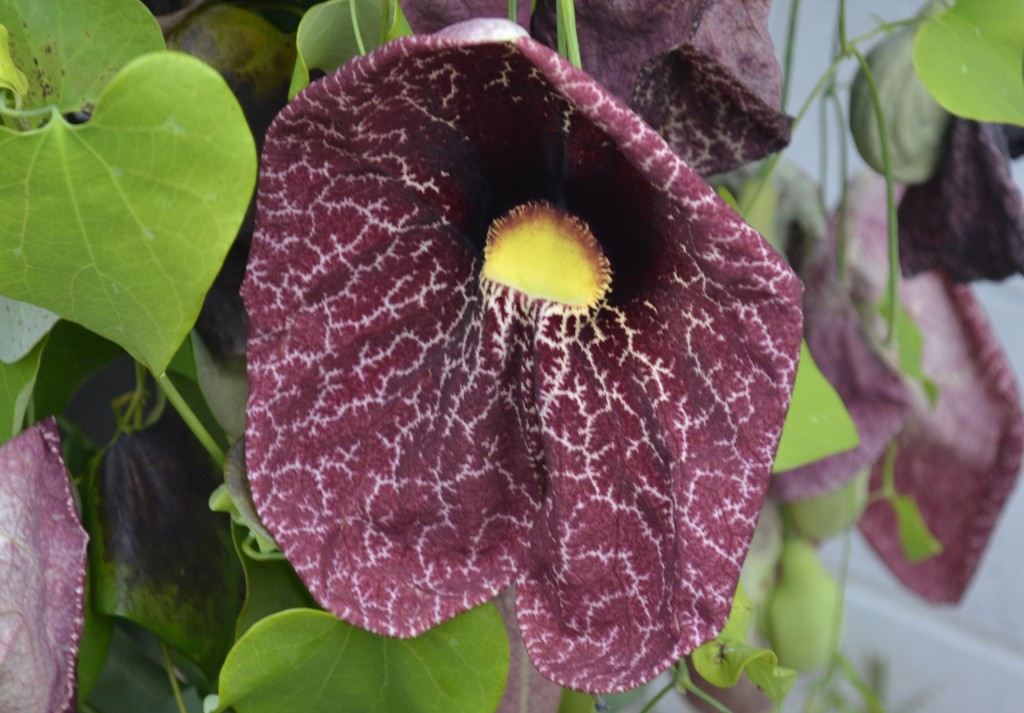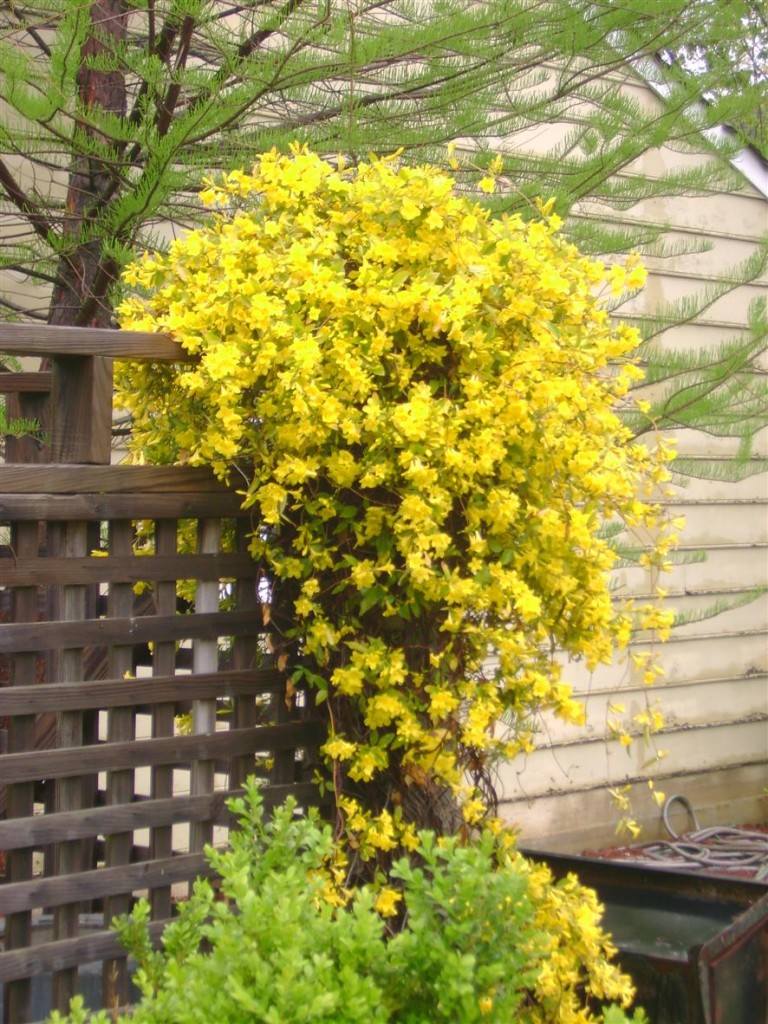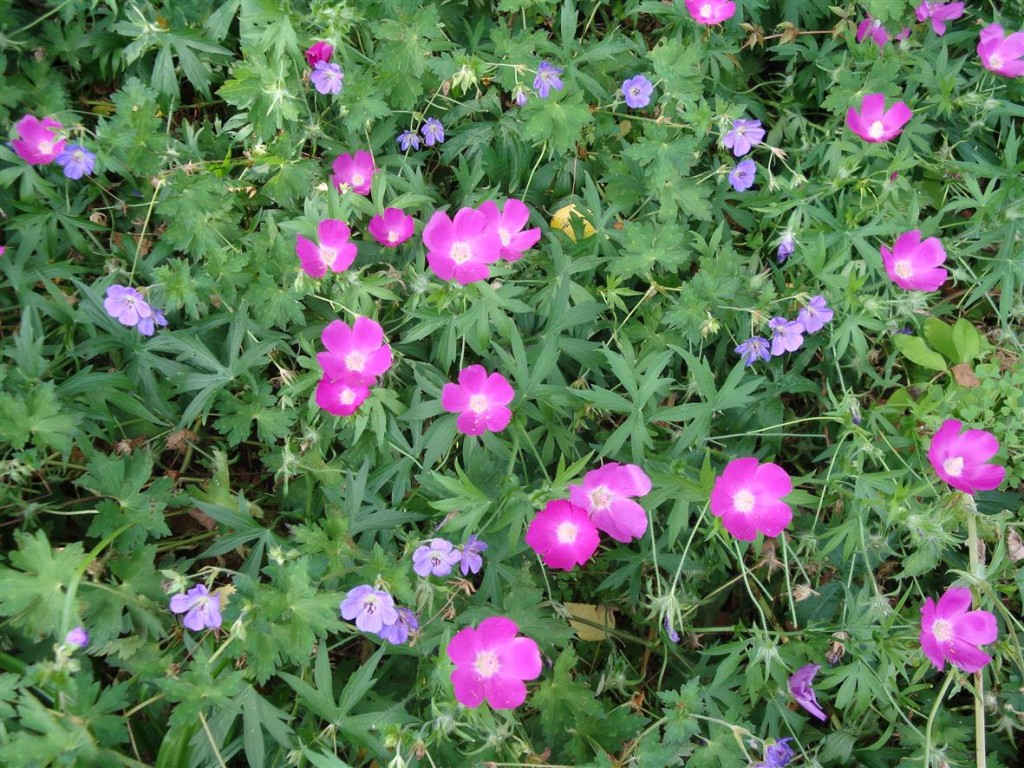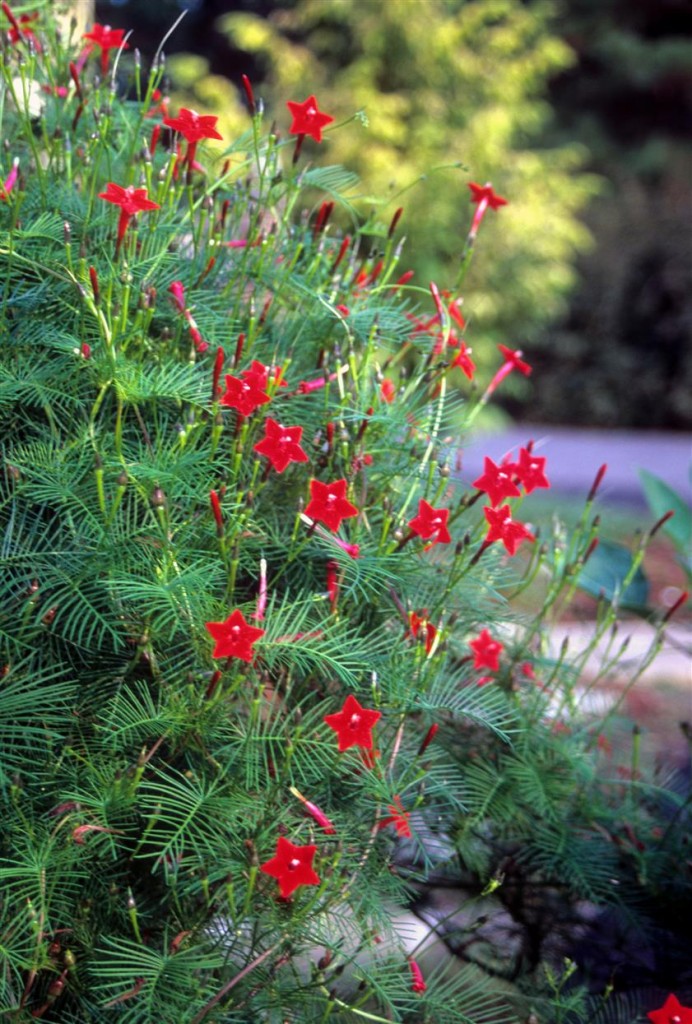Vines by Design

The tropical calico flower (Aristolochia littoralis), a twining evergreen vine, is pollinated by flies that are attracted to its pungent odor. (Photo credit Grace Chapman)
Vines are not only easy to grow, they’re fascinating. Some varieties twist and twine, while others climb upward or creep outward. Many are easily trained, others mischievously meander. Natives typically grow without consequence, while non-natives sometimes wreak havoc. Regardless of the intended use, vines provide several key garden elements: color, texture, form and interest.

Swamp or Rankin’s jessamine (Gelsemium rankinii) is an evergreen vine that takes both damp and normal soil conditions. Part-shade is preferred. (Photo by Beth Burrell)
Beth Burrell, owner of Giving Tree LLC in Mechanicsville, has developed a strong respect for vines. During her 30 years of landscape design and consulting, Burrell has experimented with a variety of vines in a variety of settings, including her family’s Giving Tree Gardens. Among general types of groundcovers—vines, herbaceous plants, low-growing shrubs and moss—Burrell considers vines one of the hardiest. “They aren’t overly delicate, so I consider them a pretty tough plant,” she said.
Vines tend to work well in difficult areas: bare spots, shady areas under trees, eroded hillsides and very wet or very dry locations. “At times an aggressive plant [such as a non-native vine] is called for,” Burrell said. “The right vine in the right place can become voluminous in the landscape.”
Gardeners also plant vines to soften hard-surface landscape elements, such as deck rails, fences and light posts, or to spotlight garden ornaments, such as obelisks and fountains. Burrell recommends planting multiple vines when possible. “Mixing vines can extend your enjoyment and season of interest,” she said, referring to the blending of annuals and perennials, as well as complementing varieties.
The upward growth of some vines has a small garden footprint, but it can yield big returns. Perennial vines planted at the base of vertical structures, such as lattices, pergolas and arbors, can create living screens that flourish year to year when properly maintained. As the climbing shoots mature, they intertwine to provide privacy and periods of shade.
“Vines are a fantastic plant that adds a little drama to your garden,” Burrell added. “Experiment— it’s the spice of gardening—and just have fun!”

Wine Cups (Callirhoe involucrate) is a native wildflower that decorates full-sun gardens with a summer-long display. (Photo by Beth Burrell)
Typically, the family of vines is categorized by the means of support.
Tendrils
are thin, wiry outgrowths from the stem or leaf that whip around to find support, and then coil around the closest contact. Passionflowers and grapes use tendrils to climb.
Twiners
use their leaves to wrap around and encircle strings, wires or other supports provided them. Honeysuckle, wisteria, morning glory, chocolate vine and clematis are twining vines.
Adhesive vines
stick to surfaces with their touch-sensitive pads. Virginia creeper and Boston ivy both rely on their adhesive capabilities to climb tree trunks and adhere to buildings.
Sprawlers or scramblers, such as rambling roses and bougainvillea, have long, flexible stems that cannot easily climb. Many use their thorns to grab onto structures for supported growth.
Clinging vines
attach firmly to most anything in their path using short, stout aerial rootlets. Their potential to permanently damage structures by lifting shingles, edging into cracks and crevices and impairing trees makes it wise to provide an arbor or trellis as a climbing alternate. Examples of clinging vines are English ivy, climbing hydrangea and winter creeper euonymus.
Bines
climb by shoots that grow in a helix around a support. The stems of many bines are rough or have downward-pointing bristles to aid their grip. Hops are the female flowers harvested from herbaceous bines of perennial hop species (Humulus lupulus) for brewing beer.

Cypress vine (Ipomoea quamoclit) is easily grown from seed and is a hummingbird favorite! (Photo credit Beth Burrell)
Vine-growing tips
Ties: Take your pick of products designed to attach vines to structures: zip ties, soft ties, garden twine, baling twine or thin thread. Selecting those green in color makes the ties practically disappear from view.
Starting seeds: Cardboard egg cartons and paper toilet roll holders are ideal for planting seeds. Once the vine seedlings are ready to plant, the entire holder can be placed in the ground since it is biodegradable.
Placement: Know a vine’s growing culture and form before planting. For example, a thorny vine does not provide a warm welcome at a doorway, nor does a non-evergreen look its best as a focal point during winter.
Editor’s Note: This article first published in the Richmond Times-Dispatch, in October 2015.